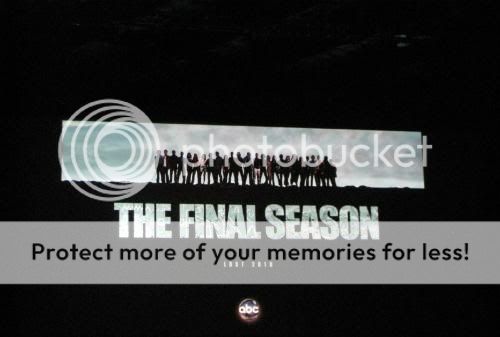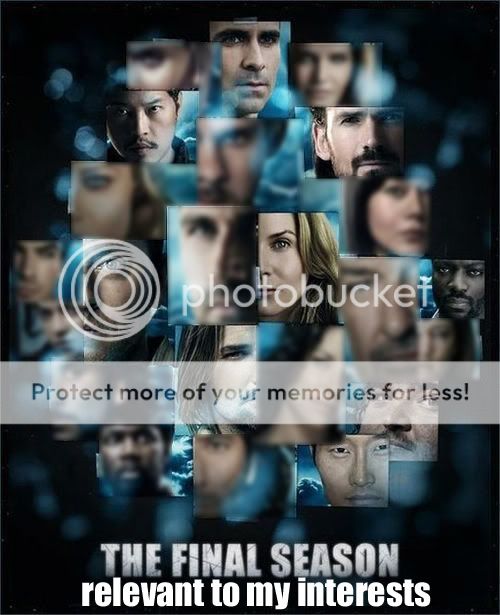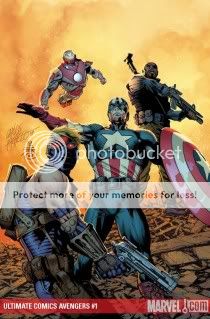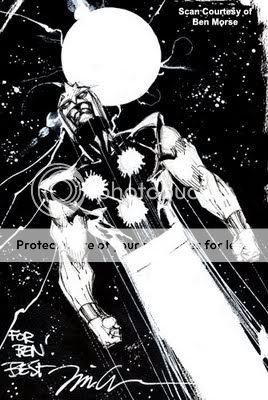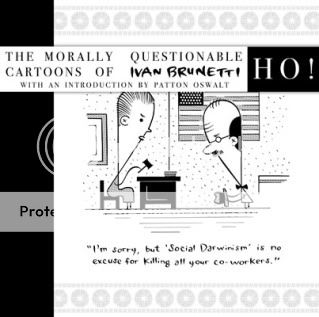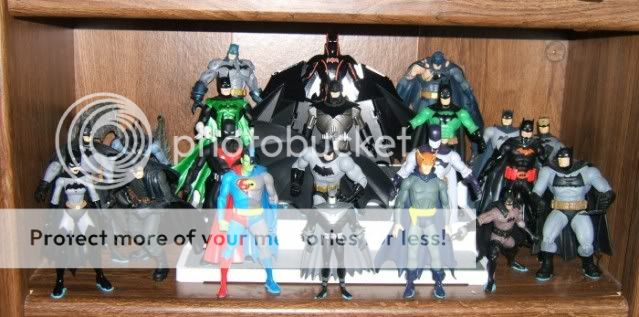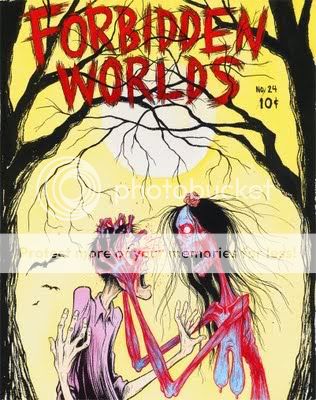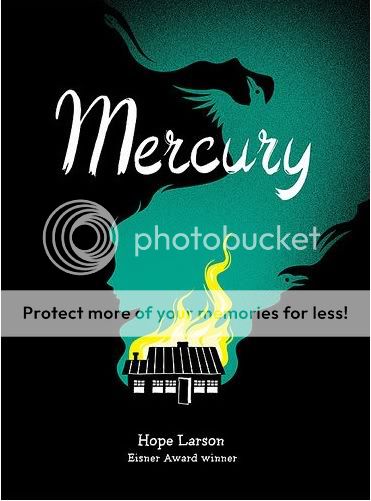Golly!
Carnival of souls
* Today’s Strange Tales spotlight Q&A is with Junko Mizuno.
* Discovery of the day (via Tom Spurgeon): Next Issue!, a new blog by Look Out!! Monsters author Geoff Grogan and Blurred Visions editor Kevin Mutch. As you might expect if you’ve read Grogan’s posts elsewhere, they come out swinging against the Kramers Ergot/PictureBox circle of artcomix makers and writers, though that doesn’t stop guys like Frank Santoro from contributing thoughtful comments. Thus far I recommend Mutch’s post on the “Stupidist” school of comic art and Geoff Grogan’s thoughts on Santoro’s “The Bridge Is Over” essay and the lack of anxiety of influence. Josiah Leighton, if you’re reading this blog, please click.
* Heidi MacDonald interviews the great Eric Reynolds about the state of Fantagraphics for Publishers Weekly. I think this exchange was much-needed:
PWCW: Who are some of the young cartoonists whose work you are most excited about?
ER: What is young? Unsurprisingly, many of my answers would be people from Mome. But that’s the great thing about comics unlike other art forms, you don’t need to be “young” to establish yourself if you have something to say.
(Via Kevin Melrose.)
* You’ve heard this everywhere now, but I’m linking to it anyway because just yesterday I was thinking how potentially wonderful this exact thing could be: AMC is making a tv series out of Robert Kirkman and Charlie Adlard’s riveting zombie-survival horror comic The Walking Dead, with The Mist‘s Frank Darabont attached to write and direct the pilot.
* Speaking of stuff I was thinking about very recently, I’ve loved carnivorous plants ever since I first learned of their existence. Something about them is just so wrong–don’t plants know how the food chain is supposed to work? So I was delighted to hear of the discovery of a new species of giant pitcher plant that can eat rats atop a mountain in the Philippines. The same expedition spotted another species of pitcher plant that has been thought extinct for decades, and a brand new species of sundew, another variety of meat-eating plant. Poison Ivy, call your horticulturist. (Via Loren Coleman.)
* Jog reviews Johnny Ryan’s very good, very weird action comic Prison Pit.
* If you’re on the fence about picking up Mat Brinkman’s Multiforce, perhaps this gallery at Monster Brains will push you off?
* Jim Woodring’s Weathercraft has blown Fantagraphics’ collective mind, apparently.
* I enjoyed this detailed article about Shudder to Think frontman Craig Wedren and his long relationship (through childhood friendship, college, and even marriage) with The State and its members. He and David Wain have been friends since they were four! Also, “X-French Tee Shirt” continues to be an astonishing song.
* Dick Smith was a talented dude.
* Ummm…
Plug maintenance failure
So excited was I about the release of the oral history of Marvel Comics I put together for Maxim that I neglected to mention I also have a piece on Brian Azzarello and Victor Santos’s Filthy Rich in that very same issue. Come for the comics, stay for the campus cuties!
Comics Time: Ultimate Comics Avengers #1 and Ultimate Comics Spider-Man #1
Ultimate Comics Avengers #1
Mark Millar, writer
Carlos Pacheco, artist
Marvel, August 2009
32 pages
$3.99
Ultimate Comics Spider-Man #1
Brian Michael Bendis, writer
David LaFuente, artist
Marvel, August 2009
32 pages
$3.99
I’m sorry, but there’s simply no way Mark Millar could open his return to the Ultimate Universe with Nick Fury saying “What the %@#&? I disappear for ten minutes and the whole place goes to hell” without intending it as autobiography. After essentially establishing the superheroes-as-paramilitary-unit tone that mainstream comics–certainly Marvel Comics–would have for the decade in The Ultimates, Millar left the franchise in the hands of Jeph Loeb for two arcs, the first of which sold pretty good but made Transformers: Revenge of the Fallen look like Chinatown and had little if anything in common with the vibe and characterizations established by Millar, and the second of which never even came out. Instead, Loeb destroyed Manhattan in the event miniseries Ultimatum, then decamped for more buoyantly awful comic-making in the main Marvel line, leaving Millar and his fellow Ultimate-line pioneer Brian Bendis to pick up the pieces.
Of course, since establishing the Ultimate Universe, Millar and Bendis (who never left, though his Ultimate Spider-Man series has had arguably the lowest profile of any of his books over the past couple years) have been given free rein over the Marvel Universe proper, which as I’ve said before is probably a big reason why the Ultimate books lost their unique luster. So I imagine it’s a matter of pride for the pair to return to their rebooted books guns blazing, proving that what they can do here, they can’t do anyplace else.
Mission accomplished to an almost alarming degree, if you ask me. Ultimate Comics Avengers #1–retitled to capitalize on the still-stunning-to-me popularity of the main-line Marvel team upon which the book is based, said popularity owing to Bendis’s revamp of it and soon to lead to movie megastardom–reads like Millar is intent on doing everything he does best. So you have some of his irksome tics, like unnecessary commas between adjectives and Tony Stark holding forth while drunk and surrounded by strippers, but you also have the kind of rock-solid widescreen action that you’d think a decade of aping Hollywood blockbusters would have made more superhero writers better at by now. Honestly, Millar is aided immeasurably by the real star of the issue, Carlos Pacheco. I’ve long thought Pacheco could be a truly ideal superhero-slugfest artist–his layouts are dynamic and when he keeps them on-model, his squarejawed superheroes look like they’re just dying to pound the shit out of someone. Here, that’s exactly what they do, as Captain America gets his ass handed to him in midair by the Red Skull in panels so full-bleed they look like the edges were deliberately cropped–like the pages can’t handle combat this two-fisted. Pacheco did yeoman’s work as a Final Crisis fill-in, and he’s looked beautiful colored by Dave Stewart in Kurt Busiek collaborations like Arrowsmith and Superman, but this is so much better than anything I’ve seen from him before. It’s like the detail of Bryan Hitch combined with the oomph of John Romita Jr. It was gonna take a lot to get me back aboard the Ultimates bandwagon after Loeb, not to mention Millar’s own lackluster “second season” of the series, but hey how about this, I’m in. Amid all the superhero comics I’m reading because of their imaginative concepts or clever execution, surely there’s room for the equivalent of Invasion U.S.A..
Bendis didn’t have as tough an act to follow–he’s been writing Ultimate Spider-Man non-stop for, what, nine years, and his recent work with Stuart Immonen has been quite strong. But there’s always a risk of diminishing returns, and those did set in for a while in the late-double-digit issues. Plus, there was all that uncertainty over whether or not Ultimate Spidey would actually live be the star of his own book post-Ultimatum, though in the end his survival ended up revealed in a weird pair of “Requiem” issues that read more like a framing sequence surrounding inventory stories they needed to burn off. And no, this reboot issue isn’t entirely free of residual Ultimatum ickiness–it’s nice that the line has the freedom to kill everyone in Manhattan, but this isn’t the kind of franchise where the characters can adequately process a trauma of that magnitude or where the societal and economic ramifications of destroying the most important city on the planet can even be touched on, not by a longshot.
But that aside, this is prime Ultimate Spidey. And again, it’s a new artistic collaborator who really makes it shine. David LaFuente feels like a bionic Stuart Immonen–the character models are similar, particularly Peter Parker’s increasingly preposterous hair, but everything’s slicker, younger, shinier, at times looking like anime (not manga, anime). I’m not sure who’s responsible for the overall look, LaFuente or colorist Justin Ponsor, but I could really get used to it. There’s a moonlit make-out scene with a lovely looking Gwen Stacy that’s absolutely sumptuous. There’s a great opening splash page that twists into some comic business at a fast-food joint, there’s a USM-trademark scene where Spidey shows up late to a fight, and after yet another ludicrous explanation for how well-known murderer the Kingpin can come back to New York and carry on business-as-usual, someone kills him. (I hope it sticks!) I was entertained throughout and surprised at the end. Keep it coming.
Carnival of souls
* And the plugs just keep on coming: Check out an excerpt from my Comics Journal interview with Skyscrapers of the Midwest author Josh Cotter on TCJ.com, and my Strange Tales spotlight Q&A with Jason on Marvel.com. Yes, I interviewed Jason, Hey, Wait… Jason, for Marvel.
* If you’ve read Asterios Polyp, you owe it to yourself to read Ng Suat Tong’s review/reader’s guide over at The Comics Reporter. Tong pulls together a plethora of visual analyses by various critics (including yours truly) and adds his own extensive insights to the mix as well. But the most provocative part of the post is where he takes issue with the coat of unreality Mazzucchelli slathered across the story–ostentatiously naming characters after characters from The Odyssey or giving them monikers like Stiffly and Ursa Major, tons of easy-to-grok symbolism and layout tricks, etc. Tong argues that all the multiple layers of meaning and artifice Mazzucchelli freights his characters with prevents them from ever actually becoming people, as opposed to representations of ideas.
Now, a part of me is quite sympathetic to this line of attack; after all, I’ve gone on at tedious length about how much I dislike fiction that exists to be decoded rather than read or watched. On the other hand, you’re talking to a guy who listed Final Crisis as one of his favorite comics of the year. If watching concepts in human form slug it out in an impeccably thought-through Crisis of Infinite Metaphors isn’t a problem for me, what Mazzucchelli is up to in AP ain’t no thing either. Moreover, the thing’s just too breezily drawn and fun to read to make you feel like you’re sitting through an ARG, or a comic where once you solve the author’s equation, you need never think about it again. And contrary to Tong’s apparent reaction, I really was moved by a few of the squences. (I’ll grant him that it’s tough to get super-super-invested in the cartoonish Majors.) My beef with the book is how well-trod a path the story itself is, and I know that somewhere inside me is a review that tears the book to pieces on those grounds, but at some point early on I decided it would be more fun to like the thing.
* Even as the outraged response to that mean-spirited fanboy’s prank on Rob Liefeld continues to fill my heart with glee, my friend Chris Ward has posted the intro to a profile of Liefeld he worked on for Wizard before the mag spiked it out of fear of a lawsuit
* Goodness, the trailer for Terry Gilliam’s The Imaginarium of Doctor Parnassus is like a steampunk Speed Racer. (Via Jason Adams.)
* And here’s a promo reel for George A. Romero’s Survival of the Dead. It’s very difficult to tell if this will be good or awful–memories of Diary of the Dead still haunt me–but it looks different than Romero’s past Dead movies, that’s for sure. (Also via Jason Adams.)
* One last Jason Adams link: His 150-word non-review of The Orphan has me both baffled and intrigued. Jiminy Christmas, I just saw Moon last night–how long is it gonna take me to go see this thing?
* If you can get past the schtick, and there’s a lot of schtick to get past, there’s some interesting stuff in Vice’s interview with Johnny Ryan about his new action comic Prison Pit. Ryan cites C.F.’s Powr Mastrs and Kazimir Strzepek’s The Mourning Star as influences and claims the book is irony-free. (Via Eric Reynolds.)
* New Nick Bertozzi comics are always a cause for celebration.
* B-Sol at the Vault of Horror issues an impassioned defense of Frank Darabont’s The Mist. Whom he’s defending it from, I’m not so sure. Apparently people really hate this movie? All I ever saw were people saying “It had its moments, but I didn’t like the ending/the CGI/Mrs. Carmody.” That was pretty much my take, though a) my problem with the ending wasn’t its existence but how quickly it seemed to come after the previous events–it felt unearned–and b) I thought the CGI was only crappy in the opening tentacle sequence, which is a shame since that’s the first effects sequence of the film and probably soured people on what came after–the creature designs were uniformly strong, though. Anyway, I think I’ve said this before, but of the trinity of monster-apocalypse movies that came out in the winter of 2007-2008, I initially preferred I Am Legend because Will Smith’s character and performance were so much stronger than anything comparable in Cloverfield and The Mist…but as time went by, IAL became my least favorite of the three because the monsters were just so, so weak. In that light, CRwM’s review of The Mist seems to me to have it about right: “honestly, the film would be better served by cutting it up in flick that ditched the preaching and emphasized the monsters.”
* Topless Rob Bricken is right: this montage of Batman’s takedowns in the upcoming video game Batman: Arkham Asylum really is pure porn for Bat-fans. It’s just Batman owning fools over and over again in quite Batman-specific ways, with Danny Elfman’s magnificent theme music as a soundtrack.
* Speaking of magnificent Batman-related music, today Matthew Perpetua takes a listen to Prince’s “Electric Chair.” Shit was hot.
The Amazing, Incredible, Uncanny Oral History of Marvel Comics
You have no idea how happy I am to announce that in the new issue of Maxim (September 2009–Milla Jovovich is on the cover), you’ll find a hefty oral history of Marvel by yours truly. This sucker was the result of over a half-year of work, and comprises interviews with Stan Lee, Joe Simon, Joe Sinnott, Dick Ayers, Jim Steranko, Roy Thomas, Herb Trimpe, Len Wein, Marv Wolfman, Chris Claremont, Jim Shooter, Gary Groth, Walt Simonson, Louise Simonson, Frank Miller, John Romita Jr., Jim Lee, Todd McFarlane, Bob Harras, Tom DeFalco, Tom Brevoort, Sam Raimi, Louis Leterrier, Tom DeSanto, Joe Quesada, Bill Jemas, Grant Morrison, Mark Millar, and Brian K. Vaughan. I haven’t had a chance to get a good luck at the final published version–my initial draft was 13,000 words long, so a lot of it had to end up on the cutting room floor–but I do know it has a pretty sweet original illustration by JRJR. I hope you enjoy it.
“Tell my wife I love her very much.” “She knows.”
I finally saw Duncan Jones’s science-fiction character-piece-cum-thriller Moon, and was glad I braved the sweat-soaked journey down to the Landmark Sunshine to do so. Moon is very, very much a creature of its own influences, and owns up to this repeatedly–and wisely, I think. If you’re going to do a suspense story about a man stranded in a cabin-fever outer-space environment with a soft-spoken computer for company, what’s the sense of playing cat and mouse with Kubrick? Better to run at 2001 head on and smack people in the face with it so we can put it behind us. I think you also see elements of Battlestar Galactica‘s lived-in, clunky equipment, Alien‘s sinister Company, the instantly dated futurism of Epcot center (those fonts!), AI‘s pathos-inducing automatons (there’s a bit here that hit me as hard as any robot-driven emotional high point since the teddy bear handing the kid the lock of hair), and some fairly direct links with the first great science-fiction work of director Jones’s dad David Bowie, “Space Oddity.” (Which in turn was a fairly direct riff off of 2001—A Space Odyssey, duh–which will bring us back to Do.) By using all of this as visual shorthand (though to be fair it adds flourishes of his own, including all those gorgeous lunar landscapes and one really breathtaking shot of the Earth), Moon has the freedom to focus on Sam Rockwell’s compelling, bifurcated performance. I’d really rather not come right out and spoil the central conceit of the film, but it requires Rockwell to take his character, Sam Bell, in a couple of very different directions, both of which must remain true to what has gone before. He pulls it off, and when it dawns on you that it’s happening, it’s pretty magnificent.
At times, the movie was difficult for me to watch. It deals with death very directly, and not in a “BANG YOU’RE DEAD” way. The body breaks down as the mind’s comprehension of what is about to befall it grows, while others are helpless to do anything about it. I’ve gotten to know this feeling pretty well lately, and having the film hold up a mirror to me in that regard was…bracing, I guess is the word. Bracing and moving and good.
Carnival of souls
* My Strange Tales Spotlight series at Marvel.com keeps on truckin’, with interviews with Johnny Ryan and Peter Bagge.
* My friend Matthew Perpetua of music-blog juggernaut Fluxblog is looking for cartoonists to develop a graphic novel project with him. I’ve heard about this thing and it should be a hoot.
* The Charles Burns-edited Best American Comics 2009 anthology is a doozy. How ya gonna keep them down on the farm after they’ve seen C.F.?
* And as Tom Spurgeon points out, the overall comics publishing landscape for late 2009 is a doozy too. There is an actual Al Columbia book coming out. As a wise man once said, ’nuff said.
* It’s weird: There wasn’t a ton of news out of Wizard World Chicago Comic-ConFare this year, but what there was was almost all stuff from the corner of the Marvel Universe I’m interested in. To wit:
* Jeff Parker’s Agents of Atlas is doing a crossover miniseries with the X-Men, then becoming a back-up feature in the even better Incredible Hercules, then getting relaunched. Meanwhile, Herc writers Greg Pak and Fred Van Lente talk to CBR about “Assault on New Olympus,” the storyline into which the Agents of Atlas back-up will feature. Wow, Incredible Hercules just became the book no semi-mainstream comics blogger can do without.
* And finally, Atlas‘s Parker will be taking over Thunderbolts from incoming Daredevil writer Andy Diggle.
* Dan Nadel waxes skeptical about Darwyn Cooke’s adaptation of Richard Stark’s The Hunter. That one Stark/Cooke scene comparison Dan pulls out is pretty rough.
* I enjoyed my fellow Savage Critic Graeme McMillan’s strip-by-strip review of Wednesday Comics. A lot of it seems really nice, but is there a there there?
* Speaking of the Savs, Jog’s review of several recent superhero comics brings our attention to Joe Casey and Nathan Fox’s stunning-looking Dark Reign: Zodiac. Where the hell did THIS come from?
* Curt Purcell bemoans how “bad-assedness often gets expressed as a certain jaded matter-of-factness about the supernatural” in genre stories with tough-girl heroines. Man, you think it’s bad in Anita Blake or whatnot, count yourself lucky you haven’t been immersed in superhero comics for the better part of a decade. There’s a prominent strain that seems geared to suck the wonder out of the whole shebang, with constant commentary from the characters about how blase they feel toward the amazing shit they’re doing.
* Elsewhere, Curt wonders, per some dismissive comments by Geoff Johns, if Blackest Night is really a horror-meets-superheroes affair after all. That’s certainly been the selling point DC has been using in promotional venues like Dan DiDio’s DC Nation column, Curt. My guess is that maybe Johns was trying to downplay it in his interview with Laura Hudson lest people think all the emotional-spectrum and death stuff isn’t Serious Business. A false dichotomy, I know, but you go to war with the Lantern Corps you have.
* My friend Ben Morse cracks open his Nova sketchbook. This Jim Lee “sketch” really is pretty impressive.
* Tons of preview pages from Lane Milburn’s Xeric application book, Death Trap, are over at the Closed Caption Comics blog.
* Please welcome Big Sunny David Allison back to the blogosphere!
* Gaze upon this gallery of Master of the Universe movie concept art and ponder what might have been. (I do remember the villain designs they ended up using being pretty good, though.) (Via Topless Robot.)
* Your Word of the Day, and my Word of My Life, is anagnorisis: “A revelation into the true nature of things, usually through tragedy.”
* OH JESUS CHRIST JIM WOODRING WHAT ARE YOU DOING
* It gives me a hope for our species I haven’t had in a long, long time to see that even on the Internet, people are naturally repulsed by the idea of being mean to a total stranger. Even when that total stranger is Rob Liefeld. (Hat tip: Matthew Perpetua.)
Comics Time: Squadron Supreme
Squadron Supreme
Mark Gruenwald, writer
Bob Hall, Paul Ryan, John Buscema, Paul Neary, artists
Marvel, 1985-1986 (my collected edition is dated 2003)
352 pages
$29.99
For today’s Comics Time review, please visit The Savage Critic(s).
Carnival of souls
* Laura Hudson interviews Geoff Johns on Blackest Night for a good long while. Johns waxes philosophical about the Emotional Spectrum, the metaphorical import of the various Lantern Corps, the difference between Marvel and DC–basically a lot more than the usual promo-heavy interviews guys like Johns end up doing.
* Eric Heisserer wrote a multi-site web-fiction horror story called The Dionaea House that scared the shit out of me a few years back. Now I guess he’s a big-shot screenwriter who penned the remake of A Nightmare on Elm Street and is rewriting Battlestar Galactica helmer Ronald D. Moore’s screenplay for the prequel to John Carpenter’s The Thing. Heisserer talks about his Thing to Bloody Disgusting.
* I’m several days late and dollars short on this, but it sounds like Robert Rodriguez really is making a movie out of his Grindhouse faux-trailer Machete. Unlike John Carter of Mars and Red Sonja and Barbarella, this one actually has more people in its officially announced cast than Rose McGowan, so I think it might actually happen. And seriously, the cast is ridonkulous: Robert DeNiro, Michelle Rodriguez, Lindsay Lohan, Cheech Marin, Jeff Fahey, Don Johnson, Steven Seagal, and Danny Trejo. This is giving Stallone’s Expendables a run for its money.
* Colin: A Zombie’s Tale is an independent horror film from the zombie’s perspective. Sure, I’ll eat it. (Pun not intended, per se, but it’s not like I scrapped it and wrote something else, is it.)
* A hearty congratulations to FourFour’s Rich Juzwiak on his forth blogiversary. It’s been a long, long time since I went in for blogger triumphalism, but I think the emergence of a writer who could speak equally eloquently on America’s Next Top Model, the state of contemporary R&B, adorable cat videos, and Cannibal Holocaust was exceedingly unlikely prior to the emergence of blogs, so thank goodness they gave us Rich Juzwiak.
* Tonight, at Portland’s Grass Hut Gallery, you can see a whole bunch of Tom Neely paintings like this one:
And a whole bunch of Hellen Jo paintings like this one:
And why wouldn’t you want to?
Comics Time: Ho!
Ho!
Ivan Brunetti, writer/artist
Fantagraphics, 2009
112 pages, hardcover
$19.99
I didn’t laugh once while reading this book. Weird, right? The status of Brunetti’s previous gag-cartoon collections Haw! and Hee! (from which Ho! is largely compiled, though whether as a best-of or a complete collection is unclear to me) as trailblazers in the realm of going-way-too-far comic-book comedy is unquestioned; Brunetti made his bones while Johnny Ryan was picking up cheerleaders. And generally speaking, I’m down for the rough chuckles. In comics terms, I obviously really like Ryan and the astonishingly black comedy (or comic blackness) of Josh Simmons. Meanwhile, my favorite Monty Python movie is the nihilistic Meaning of Life, and among my favorite Tim & Eric sketches are the savagely misogynistic Carol & Mr. Henderson bits, Steve Mahanahan’s Child Clown Outlet, the Lynchian vignette where Casey Tatum gets kidnapped by Mahanahan and vomits in terror, and the “Business Hugs” video in which Leland Palmer instructs us on the best way to comfort a man after his wife suffers her third miscarriage. This shit should be right down my alley.
So what happened? It’s difficult to say why something you don’t find funny isn’t funny to you, particularly in a case like this, where Brunetti is intentionally working with material a lot of people would find anything but funny. But I’m not on their wavelength–it’s not the extreme nature of the gags (and they get fucking extreme) that’s turning me off. I suppose it’s the disconnect between the material and the execution? Brunetti’s impeccable line looks like it’d be more at home in the pages of The New Yorker than Sleazy Slice, which I imagine is the point, but for me at least, this just neuters all but the most vicious jokes–otherwise it’s just a litany of beautifully drawn dick/poop/pedo jokes. One that has likely been robbed of much of its power to shock and entertain by the similar work of Johnny Ryan, whose more buoyant, energetic line and use of the more expansive strip form rather than the one-panel cartoon gives his midnight-black gross-out stuff a brio Brunetti lacks.
To be sure, Brunetti occasionally serves up an amusing twist or wrinkle to the calvacade of horrors. I’m particularly smitten with the gag where a man’s wife walks in on him and the dog in flagrante delicto thanks to his strategic use of frosting; the guy’s sidelong glance and pause for thought before attempting to act shocked (“Um…Bad doggie! Bad doggie!”) is a hoot. The new comics Brunetti includes in the back of the book, drawn in his current, even more simplified style, are a fine show case of his geometric character designs, all round heads and curvilinear arms. For my money, the best jokes are barely jokes at all, but rather virtually unfiltered violence and rage: A man waving goodbye to his baby as he fills its bath with acid, another man shooting a woman in the head and barking “NOW you look sexy, whore,” a pair of men sitting in a bathtub filled with the blood of the dead woman hanging from a meathook above them and agreeing that this is better than sex. It’s enough to make you wonder if the gag cartoon’s potential for horror has ever been fully explored.
But in general? Eh!
Carnival of souls
* My Strange Tales Spotlight interview series at Marvel.com continues: Yesterday’s guests were Nick Bertozzi and his good friend MODOK; today, we heard from Dash Shaw and Doctor Strange. Meanwhile, Tom Spurgeon posts preview pages from Nick, Dash, Johnny Ryan, and Junko Mizuno.
* Entertainment Weekly’s Owen Gleiberman pens a nice little paean to The Texas Chain Saw Massacre as “the template for modern horror.” I think that’s true, Dawn of the Dead‘s recent rehabilitation notwithstanding. Romero’s a hipper name to drop than Hooper (not surprising given their comparative oeuvres), his films combined horror and social commentary in the more-or-less explicit fashion mainstream critics appreciate, and there simply couldn’t be a zombie craze without him; but while Dawn was more haunting and/or biting than actually scary, watching Texas Chain Saw for the first time leaves you feeling like you’ve been in a car accident–a feeling aimed for not just by torture-porn standards like Hostel, but everything from The Blair Witch Project to the French horror wave to the modern zombie movies themselves. Tonally, the opening segment of Zack Snyder’s Dawn remake, and the entirety of the two 28 Days movies, owe a lot more to Leatherface than Flyboy. (Via Jason Adams.)
* Jesus Christ, it’s probably been ten years since I last watched Mike Leigh’s Naked, the subject of Scott Tobias’s latest New Cult Canon column for the Onion AV Club. (I have, however, listened to David Thewlis’s tour-de-force apocalypse monologue courtesy of the Orb’s “S.A.L.T.” quite a few times in the interim.) What a movie that was! I feel like the ending in particular is still at work inside me. I wonder how I’d feel about it today.
* Holy shit Matt Furie’s Boy’s Club is so funny. (Via Tom Spurgeon.)
* It’s kind of a throwaway in an unrelated item, but Tom Spurgeon’s nutshell recommendation of the manga megahit Naruto as an action-driven cultural depth charge has me pretty intrigued.
* So does Hellbound Hearts, a(n occasionally illustrated) prose Clive Barker tribute collection featuring stories from Neil Gaiman and Dave McKean, Christopher Golden and Mike Mignola, Steve Niles, Peter Atkins, Mick Garris, Richard Christian Matheson and more.
Carnival of souls
* Hey look, it’s the trailer for Peter Jackson’s adaptation of Alice Sebold’s The Lovely Bones. Heavenly Creatures ahoy. (Via Jason Adams.)
* Hey look, it’s another astonishing horror-comic cover version by Tom Neely.
* Hey look, it’s a shot from the set of the Cold Heat movie.
* Curt Purcell takes aim at some of Blackest Night‘s weak spots so far.
* It’s past time I linked to Tom Spurgeon’s San Diego Comic-Con 2009 Collective Memory link index.
* Batman action-figure shelf porn! I don’t have much of an action-figure button, but this pretty much presses it.
Comics Time: Whiskey Jack & Kid Coyote Meet the King of Stink and Monsters & Condiments
Whiskey Jack & Kid Coyote Meet the King of Stink
Shawn Cheng, writer/artist
Partyka, June 2009
44 pages
$3
Monsters & Condiments
Matt Wiegle, writer/artist
Partyka, June 2009
16 pages
$1
I can’t pretend to be an unbiased observer of these comics. Matt and Shawn are friends of mine from my bright college years; I’ve collaborated/am planning to collaborate on comics with both of them; I’ve even worked the Partyka table at conventions (though I’ve far more often freeloaded off of them). But this pair of goofy minicomics is as good an excuse as any to explain what I like about their skills as cartoonists and as packagers of their cartoons.
Whiskey Jack is a prequel of sorts to Shawn’s The Would-Be Bridegrooms, which itself was kind of like Kevin Huizenga’s Fight or Run before Kevin Huizenga’s Fight or Run existed. Instead of fighting each other to win the hand of a fair maiden, this time around the titular pair of shapeshifting braggarts fight a giant skunk to save the fair maiden’s life. They make a hash of it and the fair maiden proves more capable than either of them, as you’d expect. Shawn’s a specialist in combat, as Bridegrooms and his collaborative fight comic On the Road of Knives would indicate, but that’s not really the point here–the goal of Whiskey Jack is pretty much to show a Godzilla-sized skunk running around making fart jokes. The pleasure of the thing stems from how well-drawn the fart jokes are–I could watch Shawn’s intricate use of zipatone and his fine geometric character designs play out all the live-long day. I suppose your mileage may vary with a hand-stitched minicomic that culminates in a gigantic shit explosion, but I got pretty far with it.
 Matt Wiegle puts out one or two quick gag minis a year, and Monsters & Condiments is his latest. It’s a series of seven monster portraits, presented as dishes from the menu of one Hercule Van Helsing: “Nosferatu with dried bonito flakes over mayonnaise,” “Redcap Dwarfs with trio of dipping sauces,” “Eldritch Horror from Beyond with fresh guacamole,” etc. It’s a treat for all you fans of the creepy-cute out there, that’s for sure, and if Matt did webcomics it’d be highly meme-able–but Matt makes exquisite little minicomics with silkscreened covers instead, so it’s presented with po-faced grandiosity that makes the conceit all the funnier. He’s got a real way with monsters, too (which I’ve taken advantage of in my collaborations with him), and in particular his use of black in each portrait creates pleasing and impressive transitions as you flip back and forth. Stop by the Partyka table at any given small-press show and there are any number of similar pleasures to discover.
Matt Wiegle puts out one or two quick gag minis a year, and Monsters & Condiments is his latest. It’s a series of seven monster portraits, presented as dishes from the menu of one Hercule Van Helsing: “Nosferatu with dried bonito flakes over mayonnaise,” “Redcap Dwarfs with trio of dipping sauces,” “Eldritch Horror from Beyond with fresh guacamole,” etc. It’s a treat for all you fans of the creepy-cute out there, that’s for sure, and if Matt did webcomics it’d be highly meme-able–but Matt makes exquisite little minicomics with silkscreened covers instead, so it’s presented with po-faced grandiosity that makes the conceit all the funnier. He’s got a real way with monsters, too (which I’ve taken advantage of in my collaborations with him), and in particular his use of black in each portrait creates pleasing and impressive transitions as you flip back and forth. Stop by the Partyka table at any given small-press show and there are any number of similar pleasures to discover.
Carnival of souls
* It’s been a looooooooooooong time coming, but today Marvel.com posted my interview with Paul Pope about his contribution to the company’s upcoming “indie/altcomix creators do the Marvel Universe” anthology series Strange Tales. Even if you’re not interested in the book, Paul talks about some of his childhood favorites, which is a treat.
Best of all, this interview is just the first in a loooooooooooooong series. When all is said and done, I expect to have interviews up with everyone involved in Strange Tales. As you can imagine this has been no small undertaking, and many thanks to Ryan Penagos, Aubrey Sitterson, Jody LeHeup, Ben Morse, Arune Singh, John Cerilli, and all of the creators for helping to make it happen.
* Heidi MacDonald’s San Diego Comic-Con report contains the most detailed and useful chronicle of the show’s possible security/traffic-management overreach and missteps this year that I’ve seen. For the most part, overreach and missteps are what it sounds like, as opposed to, say, the thoroughgoing lack of planning and dearth of informed staffers that made the first New York Comic Con such a mess. Fortunately, a lot of the problems Heidi describes seem like they could be solved by beefing up requirements for pro and press passes and subsequently really making them mean something in terms of access. Providing guest lists for the panels to the security guards would obviously help, too.
After her rundown of the security issue, Heidi moves on to the Great Hollywood Douchebag Invasion. I complained about this a bit last year myself. It’s not the Hollywood component of the show per se, it’s the (in the immortal words of Tool) smiley gladhands with hidden agendas who go with it that irk. Nothing infuriates the part of me that got beat up in fourth grade for liking G.I. Joe than seeing these moneyed jackasses descend upon my beloved Nerd Nation.
But then Heidi segues to a complaint about the big swanky exclusive Hollywood parties, which she laments that comics people can’t even get into. Here’s the thing: If they’re so full of douchebags, why would comics people want to get into them anyway? Who cares if they’re not inviting Darwyn Cooke?After all, it’s not like Spike TV took over the altcomix beach party and threw Kim Thompson out by the scruff of his neck. Before the Hollywood Invasion, these giant glitzy shindigs didn’t exist, and they’re not ruining anything that did. If comics people want to party so badly, they should throw their own parties. Yeah, they probably won’t be as lavish as the studio soirees, but comics isn’t as big as the motion picture industry, so why would they be that big? I don’t see why comics folks should feel entitled to hang with the Hollywood types just because the Hollywood types have an overactive sense of entitlement. Two wrongs don’t make a right and all that. And in my old age, discovering that other people nearby are having a more fabulous time than I am has ceased to rankle. I’d rather sit around a dinner table and talk to my friends than stand around amid hundreds of people I don’t know and shout to them. (I see Tom Spurgeon had many of these same thoughts.)
* Here’s another thing: I love the Con as a cultural phenomenon and therefore I love giant reports on the Con as a cultural phenomenon, whether as a reader or a writer. I am an all-purpose nerd, and Comic-Con is my Disney World. I think that for many media outlets, combining comics with general geekery is logical and desirable–I pushed for it at Wizard, for example. But here in the Comics Internet, we have the ability to generate giant reports solely on the comics news and comics releases and the overall comics presence at the con–and we should! I think it’d be very useful for more of the comics press to generate big after-action reports that didn’t have a single mention of stormtroopers or cosplayers or Twilight or Iron Man 2 or long lines or the party scene or what the flight was like or anything but interesting comics stuff. Next time I go to a big show I’ll try giving that a shot. If we want the comics component of Comic-Con to get more attention, we might as well be the ones who start paying it!
* Did everyone know there’s a giant new John Porcellino book coming out this fall and just didn’t tell me? It’s called Map of My Heart, it comes out from Drawn & Quarterly in October, and I guess it collects strips about his divorce. He’s touring to support it, too.
* My friends in the comics industry and I already meet for lunch in Bryant Park once a week or so (when it isn’t grotesquely humid at least), so I think we’ll have to make a point of checking out this roundtable discussion featuring David Mazzucchelli, Chip Kidd, Joe Quesada, Heidi MacDonald, and Danny Fingeroth at the Bryant Park Reading Room on Wednesday August 19th.
* Also from Heer: Following up on Frank Santoro’s obituary for alternative comics in the Direct Market–part lament, part “good riddance”–Heer notes the small-c catholic comics education that both superhero fans and altcomix adherents stand to lose if the bridge really is over.
* My pal Ceri B. comes to praise Brian Wood’s Local and bury Brian Wood’s Demo.
* Now That’s What I Call Torture Porn: Rick Trembles’ Motion Picture Purgatory tackles Graphic Sexual Horror, a documentary about an extreme, horror- and serial-killer-influenced S&M porn site shut down by the Feds under the dubious contention that porn funds terrorists, or something.
* Slate’s Josh Levin lists 144 potential routes to an American apocalypse, from bang to whimper and beyond. (Via CRwM.)
* Heebie-jeebies here we come: Cracked lists 7 Terrifying Giant Versions of Disgusting Critters, from worms to crabs to spiders. All creepy, and all too real!
* This truly is one of the funniest shirts I’ve ever seen.
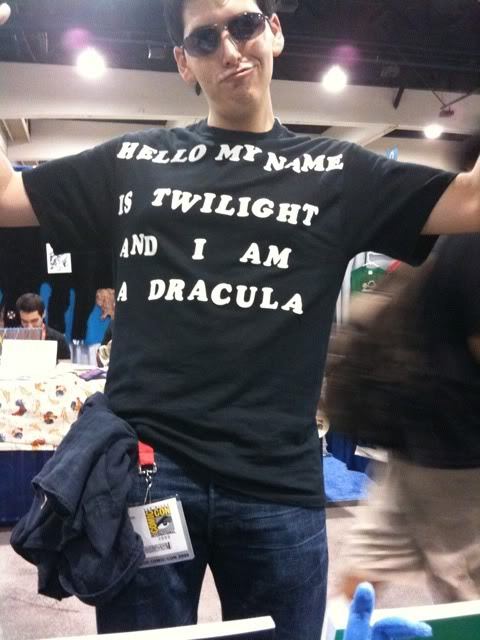
HELLO MY NAME IS TWILIGHT AND I AM A DRACULA
I just like writing it!
Carnival of souls
* Matt Maxwell continues to beat the San Diego Comic Con into submission with his word-mace: here, here, here. I think Matt’s perspective is valuable in that he’s a smart guy with articulately argued taste, but also because he’s writing about the show from a the insidery perspective of a seasoned pro, but leavened with plenty of open and honest acknowledgment that he’s still in some ways an outsider. To be frank, most comics commentators are too busy swinging their dicks around to be that candid, making Matt’s observations all the more worth noting.
* Speaking of valuable perspectives on San Diego, the great Jordan Crane had a really bad time this year and may not be long for the show overall.
* Believe it or not, The Blair Witch Project–the scariest movie I’ve ever seen–is ten years old this summer. The Horror Section’s Jay Clarke rounds up reactions and memories from a variety of horror bloggers, and offers up a few of his own. As I say every time Blair Witch pops up among the horror cognoscenti, I’m really gratified to see that the movie appears to have successfully weathered its massive backlash and is on the verge of canonization, if it hasn’t made it there already. (Via Rue Morgue.)
* Wow, cartoonist Lisa Hannawalt is all over the comics internet today. In addition to my review of two of her minicomics, both Scott McCloud and Ken Parille have extremely complimentary things to say about her new comic from Buenaventura Press, I Want You.
* Tom Spurgeon interviews Lilli Carre of Tales of Woodsman Pete and The Lagoon. Did you know she has a new book out called Nine Ways to Disappear? I didn’t!
* New Kevin Huizenga book called The Wild Kingdom coming in 2010!
* Two of the best Mome contributors, Tom Kaczynski and Dash Shaw, are collaborating. This should be pretty sweet.
* Hans Rickheit shows off a copy of his Fantagraphics graphic novel The Squirrel Machine. I am awfully excited for this.
* Deep in my mental “someday, Sean, someday” file is a thinkpiece on Tim and Eric Awesome Show, Great Job!‘s use of horror as comedy. We may never get there, but in the meantime there’s this interview with Tim Heidecker and Eric Wareheim at VanityFair.com, in which they explain that for them, the horric awfulness of a disturbing David Lynch scene and the comedic awfulness of an awkward scene from The Office are essentially playing the same notes. (Via Whitney Matheson.)
* Robot 6’s JK Parkin interviews my pal and Twisted ToyFare Theater collaborator Justin Aclin about San Diego and his book Hero House. Justin’s a friend so I’m nowhere near an unbiased observer, but I think that if you like indie superheroes, you’ll really appreciate how hard he works to give this book emotional heft within the genre by exploring how friendships begin and end.
* I ought to have linked to these before, but Douglas Wolk and Chris Mautner both reviewed David Mazzucchelli’s excellent Asterios Polyp. One thing to keep in mind about that book is that it doesn’t feel like homework at all–it’s a lot of fun to read!
* Frank Santoro wants to stick a fork in the Direct Market and its associated ways of making, selling, and convention-ing comics. Tom Spurgeon’s not so sure. The split seems to stem from whether or not you think the DM’s (d)evolution is due to irreversible trends in the North American comics marketplace and mainstream comics tradition, or due to reversible decisions made by a handful of that marketplace/tradition’s major actors.
* Hope Larson ain’t no slouch neither.
* James D. Griffioen presents a photo gallery of “feral houses,” abandoned homes overwhelmed by encroaching nature. Griffioen is the photographer whose pictures of the ruined Detroit Public Schools Book Depository burned up the internet a while back. (Via Bryan Alexander.)
Comics Time: It’s Sexy When People Know Your Name and Stay Away from Other People
It’s Sexy When People Know Your Name
Lisa Hannawalt, writer/artist
self-published, 2007
60 tiny pages
$3.50
Stay Away from Other People
Lisa Hannwalt, writer/artist
self-published, 2008
56 pages
$5
There’s a lot to like about Lisa Hannawalt’s comics/doodles/stream of consciousness/what have you as presented in this pair of minicomics. (A third, Mistakes We Made was one of the Ones That Got Away from me at MoCCA 2009). For starters, she can draw like a motherfucker, with a razor-tight line that lends itself perfectly to manically detailed portraits of nattily attired human bodies with animal or insectoid heads. Those things are sort of like if Matt Furie based his similar work on wintertime Macy’s catalogs from the early ’80s, and could easily make her the toast of a hipster-illustration world that, bizarrely, seemingly can’t get enough of weird animal stuff these days. But she’s also got the mind of a sketch comedian, or perhaps more accurately an observational webcomics cartoonist of the sort who’s equally popular in an entirely different segment of the illustration-appreciating population. Her list-based strips, rolling out her thoughts on topics such as “Ideal Wedding Plans,” “A Typical Week,” “12 Things I Think About on My Way to Work,” and the strip on unlikely things that are sexy that gives the first mini its title, progress in a rewardingly and amusingly haphazard fashion, alternating short-and-to-the-point deadpan entries with lengthy and baroque ruminations that you have no doubt plagued her brain for minutes on end. In that “On My Way to Work” strip, for example, entry #9 is “Car Crashes”; entry #6 is this:
What Does the Factory Where Money Is Made Look Like and How Do They Keep Employees From Stealing It. Paper money is printed in large strips which must be cut by giant scissors. All of the little 20s must be furiously stamped by hand onto every $20 bill. Employees must strip naked and place clear packing tape over their genitals and bodily crevices. They receive excellent benefits and are exempt from paying income tax.
Needless to say, that’s all illustrated, in all its packing-tape-covered-buttcrack glory.
 But if the goofiness of the gags conceal Hannawalt’s self-exposure with silliness, other parts of these minis do no such thing. Speaking as someone who suffered through a loooong car commute of his own for several years, I instantly related to her frequently referenced obsession with car crashes, and her unnecessarily detailed drawings of animals and entrails (occasionally combined), all of which I saw and/or thought about way more than was healthy during that time. Her approach to sexuality is similarly infused with a sense of “I just can’t help it”–witness the uncomfortable gag (no pun intended) about how she distracted herself at the dentist by thinking of oral sex, and the shame-tinged images that conjures for her; or the juxtapositions of imagery and text for the strip about things that are sexy, several of them hinging on dominance, submission, or even violence in a disarmingly direct way. (“A healthy appetite is sexy, and so is the act of obediently eating what has been given to you”; “Being patronized or humiliated can be sexy.”) Hannawalt’s skill set is varied and unique; she’s going to be part of Buenaventura’s damn-the-torpedoes alternative-comic-book line, and I’ll be looking forward to it.
But if the goofiness of the gags conceal Hannawalt’s self-exposure with silliness, other parts of these minis do no such thing. Speaking as someone who suffered through a loooong car commute of his own for several years, I instantly related to her frequently referenced obsession with car crashes, and her unnecessarily detailed drawings of animals and entrails (occasionally combined), all of which I saw and/or thought about way more than was healthy during that time. Her approach to sexuality is similarly infused with a sense of “I just can’t help it”–witness the uncomfortable gag (no pun intended) about how she distracted herself at the dentist by thinking of oral sex, and the shame-tinged images that conjures for her; or the juxtapositions of imagery and text for the strip about things that are sexy, several of them hinging on dominance, submission, or even violence in a disarmingly direct way. (“A healthy appetite is sexy, and so is the act of obediently eating what has been given to you”; “Being patronized or humiliated can be sexy.”) Hannawalt’s skill set is varied and unique; she’s going to be part of Buenaventura’s damn-the-torpedoes alternative-comic-book line, and I’ll be looking forward to it.
Quote of the day
When it comes to obsessively policing the “correctness” of works within their chosen genre, nobody beats horror fans.
Sure, sci-fi readers may have us matched when it comes self-defensive knee-jerk reactions to what we perceive as anti-genre bias in the mainstream. But nobody can get as hot when proposing what should and should not be considered as a valid addition to our pet genre. You couldn’t find a mystery fan who, even if their tastes ran towards the hardest of hardboiled crime fic, would not recognize the elegant classics of Elizabeth Daly, the juvenile Nancy Drew series, and the aw-shucks slapstick of Kinky Friedman as all belonging legitimately to the genre. Sci-fi guys regularly lay down definitions RE the scientific rigor of the romances they read, but they know it’s bullshit: Not a one of them wouldn’t count Philip K. Dick among their number and his works are about as scientifically rigorous as The Great Space Coaster. I can’t imagine you hear many romance novel readers say, “I don’t consider romances between nurses and doctors to be real romance. It’s either lusty pirates with good hearts and the clever, but sheltered – don’t forget sheltered, sheltered is the whole thing! – daughters of wealth shipping magnates or nothing!”
—CRwM, And Now the Screaming Starts
OH MY JESUS YES
Carnival of souls: special San Diego Comic-Con post-mortem edition
* Comic-Con criticism I can get behind: Topless Robot’s Rob Bricken calls out some of this year’s most prominent press pitfalls, including bad wireless access, press passes that really don’t do much for those who hold them, and line-control policies that prevent adequate Hall H access for press and public alike.
Last year there was a lot of kvetching from the nerd press about access, a lot of which I thought was a simple failure to take into account the size and scope of the 21st-century Comic-Con experience. And honestly, I was pretty surprised that Rob’s corporate overlords expected him to cover the thing all by himself–that’s exactly the lack of realistic expectations I was talking about. (They could at least have sprung for a guestblogger to keep the home fires burning with links while Rob was out and about at the show.)
But I also pointed out last year that the show’s press pass is pretty much useless as anything but a regular pass that sometimes can get you into the building, though not the exhibit hall or panels, a little early. When you’re handing out 3,000 press passes out of a total attendance of 125,000, why bother? So I agree with Rob and Tom Spurgeon and (I think) Heidi MacDonald and probably plenty of other people that the Con needs to be way more stringent about press credentials, scale back the number of press passes they issue accordingly, but then scale up the rights and privileges afforded to the press they do let in. I appreciate the show’s egalitarianism w/r/t the pass policy currently, but I think the costs outweigh the benefits at this point.
Meanwhile, the way I was able to get done all the coverage I needed to get done last year was by sitting on the floor and posting stories using the convention center’s free wireless whenever I could. When you’re on deadline in the midst of an event the sheer physical size of Comic-Con, being able to post wherever, whenever as opposed to schlepping to the press room or god forbid your hotel can be the difference between success and failure. This year, not only was the wireless completely unreliable, but I’ve also heard that security would prevent people from simply sitting down in the hallways from time to time. Either one of these scenarios would have been a complete dealbreaker for my ability to get my work done last year, and it’s imperative that the show solve these problems next year.
Finally, between the Iron Man 2 debacle Rob describes, in which the room wasn’t cleared beforehand and therefore thousands of people who spent hours waiting in line in the sun to get in couldn’t get in, and Tom Spurgeon’s anecdote about how halfway through cartoonist Richard Thompson’s panel security started letting in people for the next, very different, panel, it seems that the increased number of security personnel/traffic wranglers didn’t translate into an increased quality of security or traffic flow. Now, moving that amount of people around quickly enough to start things on time is a very difficult challenge; and suppose you really want to see two things in a row, you’re not just in the first thing to save yourself a seat for the second thing, but you’re forced to choose because they clear the rooms each time? So maybe they need to make exceptions with obvious crowd magnets like Iron Man 2, I dunno. But it’s a problem, and in that particular case it seems like it was an anticipatable problem. If they can shuffle around panels on the fly to avoid a Twilight/Avatar collision, surely they can put a little thought along similar lines into everything else going on in Hall H at the least.
* Comic-Con criticism I can’t get behind: Avoiding the usual variations on “Twilight is icky,” Chris Butcher deploys a novel line of attack against that franchise’s presence at the show: 6,000 Twilight fans at Comic-Con only for Twilight take 6,000 tickets for potential comics buyers out of circulation. Which I suppose is true, strictly speaking, but only if you buy the many, many assumptions that go into that statement, which I don’t.
First, how do you know that the majority of fans at the Twilight panels didn’t buy comics–or any of the many, many other products on sale at the Con?
Second, how do you know that if they were all magically vaporized, their thousands of tickets would be snapped up by comics fans, as opposed to people who are just there to see James Cameron or Peter Jackson or the Venture Brothers guys or any of the countless other non-comics fandoms at the show?
Third, now that I mention it, why single out Twilight in the first place of all of said countless other non-comics fandoms? I don’t think Chris is at all on the “ewwww Goths/girls/tweens” tip that lots of other Twilight critics are on, but at the same time, how many members of the 501st Stormtrooper Legion do you see at the Fantagraphics booth?
Now, you could easily answer the above questions like so: “First, I don’t care about the non-comics stuff on sale at the show, only comics matter; second, and third, we should try to reduce the presence of all those other fandoms too.” This is what Chris appears to be advocating with his call for an ideological litmus test to be applied to potential Con exhibitors–an Office Space-style mantra of “Is This Good For The Comics?” This is more coherent point of view than simply singling out the Frowned-Upon Fandom of the Year, but it’s not a terribly valid or useful one.
Comic-Con has always been a cross-media extravaganza–it’s just gotten much better at being one in recent years. It never was and will never be Angouleme, or Heroes Con for that matter. You could look at the Hollywood/videogame/assorted-nerdery component as the tail that wags the dog if you want, but at this point the dog is a chihuahua and the tail is like one of those 200-yard-long Batman capes drawn by Todd McFarlane. It doesn’t make sense on a business level, or on an overall customer happiness level, to start asking Robert Pattinson if he read Asterios Polyp before you allow him to attend the show. And it doesn’t make sense to hold Comic-Con to a “for comics, by comics” standard which has little basis in the fact of the show as it’s existed for years, and which would make it an entirely different and less successful show.
That said, there are a lot of things that can be done to preserve and enhance the comics component of Comic-Con within the Con’s current identity and framework. Most of them involve not penalizing the movie fans and gamers and Klingons and whatnot, but boosting cooperation between the Con and the comics industry, or just within the comics industry itself, to make sure that the art form’s anchor presences at the show are respected and perpetuated. Here’s another idea: Nine Inch Nails is releasing tickets to its final concert tour in three waves–first through a NIN.com members-only presale on the NIN.com website, second through a password-protected presale on the Ticketmaster website, and third through the usual Ticketmaster/box-office procedure, all staggered by a week or two. Plus, most venues hold back a handful of tickets that they release only on the night of the performance. Couldn’t Comic-Con do the same in order to accommodate different demographics with different levels of advance awareness and interest in the event, thus (ideally) giving casual fans who are more likely to swing by and browse for books rather than camp out overnight for the Lost panel a foot in the door?
The point is, pointing the finger at specific fandoms isn’t the answer any more than pointing the finger at all fandoms is. Comic-Con is what it is; it’s easy to go there and have a tremendous show as a comics reader; it’s harder but still eminently doable to make the comics component of the show stronger and more accessible. Twilight has nothing to do with it.
* Part 3 of Matt Maxwell’s cyclopean Comic-Con report is up. The meat of this one centers on two very different “breaking into comics” panels.
* Experience Comic-Con through the eyes of Ben Morse. I think that was a Faye Dunaway movie, no?
* Alien director Ridley Scott will be directing an Alien prequel. Hm. (Via Jason Adams.)
* For some reason, Entertainment Weekly talks to Neil Gaiman about the vampire craze. Is anyone else surprised that we haven’t seen more people dipping into the ‘Salem’s Lot “Dracula meets George Romero” well recently? (Via Jason Adams again.)
* As you probably discovered yesterday, which was when I meant to post this, the trailer for the Coen Brothers’ upcoming movie A Serious Man is pretty terrific.
* If you click here you’ll see a stunning image by Renee French.
* If you click here you’ll see a stunning image by Frank Santoro.
* Hey, The Comics Journal #299 features my interview with Skyscrapers of the Midwest author Josh Cotter!





